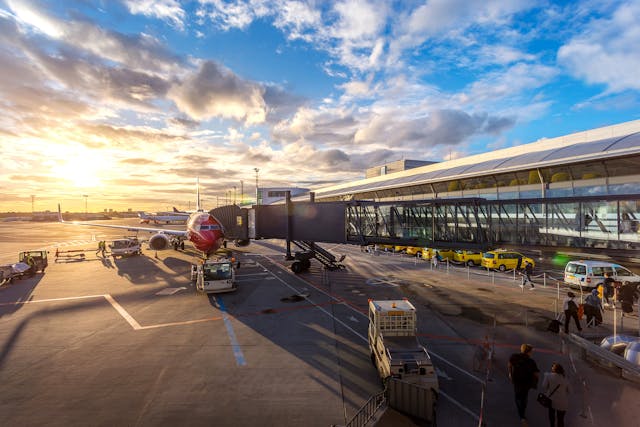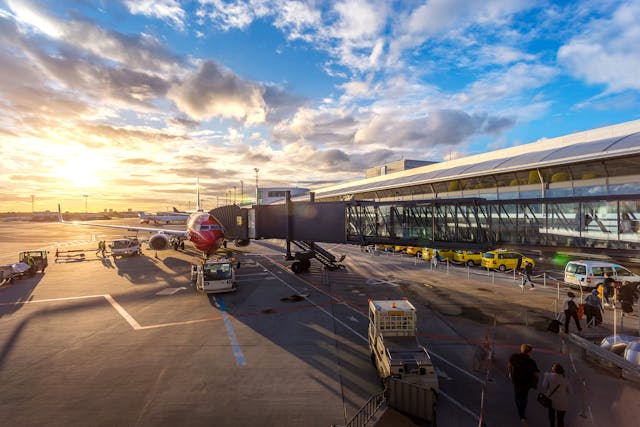

The COVID-19 pandemic undoubtedly reshaped Southeast Asia's aviation landscape. Global passenger traffic surged by approximately 68.5% after the height of the pandemic, which influenced aviation trends in the region. Airports have been rapidly developing to navigate this evolving landscape, leading to the widespread adoption of smart airport technologies in Southeast Asia's aviation market.
Smart airports leverage automation technologies and digitalization to enhance the overall passenger experience while prioritizing safety and well-being. For example, UVC-LED and automated disinfection facilities were applied in smart airports to respond to the pandemic, alongside HEPA filters to contribute to a healthier environment. This visible tech integration reassures passengers of safety priorities.
The extensive digitalization of airports significantly impacts the customer journey, offering conveniences such as online check-in, e-boarding passes, real-time flight updates, and seamless navigation through digital displays. This streamlined experience extends seamlessly to arrival, where automated border control and self-service baggage collection effectively minimize wait times. The integration of cutting-edge airport technology also provides pertinent information on ground transportation, fundamentally transforming the traveler's journey from a cumbersome and time-consuming process to a tech-enabled and streamlined airport experience.

Southeast Asia aviation is embracing digitalization at varying rates. Singapore's Changi Airport stands out as a model smart airport renowned for its innovative use of technology and unparalleled passenger experience. Simultaneously, other Southeast Asian airports are actively adopting technology-driven solutions to augment passenger experience and operational efficiency.
For instance, Suvarnabhumi Airport in Thailand has introduced facial recognition technology at passport control, while Kuala Lumpur International Airport (KLIA) in Malaysia and Ninoy Aquino International Airport in the Philippines have implemented automated immigration clearance using biometric technology. Likewise, Jakarta Soekarno-Hatta International Airport in Indonesia and Tan Son Nhat International Airport in Vietnam, along with other airports in the region, have incorporated self-service kiosks, automated systems, and mobile apps to enhance the passenger experience.
Looking ahead, the Southeast Asia aviation market is expected to embrace further advancements and innovations in digital technology.
YCP Solidiance's white paper, "The Future of Smart Airports in Southeast Asia," anticipates several key developments in smart airports in the region. Firstly, automation is set to play a more prominent role across various airport operations, encompassing baggage handling, aircraft maintenance, and ground handling processes. Biometrics, particularly facial recognition, are expected to see increased adoption, enhancing both security measures and the overall passenger experience.
Additionally, AI and data analytics are projected to become integral components of smart airports in Southeast Asia, providing invaluable insights to enhance operational efficiency and passenger services. The impending introduction of 5G connectivity holds promise for faster and more reliable communication, enabling seamless connectivity and optimizing the use of IoT devices within the airport environment.
Sustainability remains a central focus, with smart airports in Southeast Asia leveraging innovative technologies to reduce environmental impact and minimize their carbon footprint. Lastly, the evolution of digital services is anticipated to persist, introducing new platforms such as mobile apps, digital kiosks, and virtual assistants, further enhancing the overall passenger experience in smart airports across the region.

Revolutionizing Finance: An Overview of Digital Lending in Southeast Asia
Digital lending is poised to become the primary revenue driver for digital financial services in Southeast Asia (SEA) by 2025, outpacing digital payments. This growth is fueled by a 33% annual increase in digital lending, supported by technological innovations such as automated loan origination processes and seamless integration of financial services into digital experiences. These advancements have made it easier for consumers to access financing for various needs, including online shopping, travel bookings, and ride-hailing services.

IoT Integration in the SEA Automotive Lubricants Market
The Southeast Asia (SEA) automotive lubricants market is rapidly evolving with the integration of Internet of Things (IoT) technology. This transformation offers significant benefits, creates new opportunities in smart technology, and introduces innovative IoT solutions that can revolutionize the industry.

Embracing Robotization: Challenges and Opportunities in Industry 4.0
Robotization presents challenges and opportunities for businesses and the workforce, requiring companies to embrace this transformation.

Opportunities in the Indonesian Skincare Market
The rapid growth of the Indonesian skincare market presents significant opportunities for the beauty industry. Projections indicate a steady growth trajectory of 4.6% over the next five years, reflecting sustained consumer demand and market expansion. In this article, we will explore the various opportunities that the Indonesian skincare market presents for brands seeking to establish a strong foothold and thrive in this dynamic landscape.